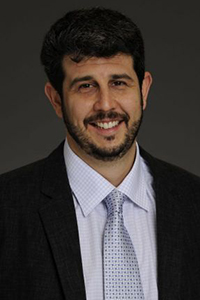Two Forms of Non-Invasive Brain Stimulation Helped Older Adults with Treatment-Resistant Depression
Two Forms of Non-Invasive Brain Stimulation Helped Older Adults with Treatment-Resistant Depression

Depression that doesn’t respond to conventional treatments is a serious problem for all who are affected, and poses unique risks for those over 60. Late-life depression is often complicated by the presence of other illnesses and is associated with high rates of disability and mortality. Moreover, evidence indicates that depression in older adults is a risk factor for dementia.
Unlike some other dementia risk factors, depression is regarded “modifiable,” in that its symptoms can be alleviated, at least in principle. Statistics show, however, that a large proportion of older patients fail to respond to a first course of conventional antidepressant drug therapies.
In view of this fact, a research team led by 2010 BBRF Young Investigator Daniel M. Blumberger, M.D., of the Centre for Addiction and Mental Health and University of Toronto, Canada, has been exploring the possibility of using non-invasive brain stimulation to help older patients with treatment-resistant depression. Three-time BBRF grantee and Scientific Council member Zafris J. Daskalakis, M.D., Ph.D., chair of psychiatry at the University of California, San Diego, was also a member of the team, as was Shawn McClintock, Ph.D., a 2008 BBRF Young Investigator.
In a study appearing in JAMA Psychiatry, the team reported on its effort to compare rTMS (repetitive transcranial magnetic stimulation), a well-established and FDA-approved treatment, with a newer variant that is also FDA-approved, called TBS (theta-burst stimulation). While both forms of brain stimulation are non-invasive and are often applied to only one side of the brain, the new study tested protocols in which both forms of stimulation were applied bilaterally, i.e., to both hemispheres of the brain. In past research, the team had gathered evidence that bilateral stimulation may be associated with higher rates of remission in depressed older adults.
TBS has potential advantages over conventional rTMS, the team noted. These relate to the much shorter time it takes to deliver a single session of TBS therapy, and the much reduced time for a patient to receive a full course of therapy.
Standard bilateral rTMS sessions typically take about 48 minutes and are delivered daily for 5 days a week over 4 to 6 weeks. The bilateral TBS protocol delivers both continuous TBS (cTBS) and intermittent TBS (iTBS) and takes about 4 minutes per session. The abbreviated duration of TBS sessions has led to the development of accelerated TBS protocols that deliver multiple sessions per day. An accelerated iTBS protocol has proven very successful in recent clinical trials in which 10 daily sessions each separated by 50 minutes are delivered to the patient over 5 days. A commercial version of this approach, pioneered by two-time BBRF Young Investigator and 2019 Klerman Prize winner Nolan Williams M.D. of Stanford University, was cleared by the FDA in early September.
For their trial, Dr. Blumberger and colleagues enrolled 172 “moderately” depressed, treatment-resistant outpatients from the community, half of whom were randomized to the rTMS group and half to the TBS group. Most were in their 60s and slightly more than half were female. Due to the great difference in session treatment times, the participants knew which group they were in, as did their doctors. But those evaluating them at baseline, after every 5 treatment sessions, and then 1, 4, and 12 weeks after a full course of therapy had been delivered did not know which group the participants had been assigned to. A cognitive battery was also given to each participant at baseline, immediately following the end of treatments, and 12 weeks after that. These tests measured executive function, memory, and overall cognition.
A single course of bilateral TBS and rTMS delivered very similar results. Both groups of patients experienced a similar reduction in depression symptoms and about 35% (TBS) and 33% (rTMS) achieved remission, which is similar to reductions seen in younger patients. The TBS group demonstrated continuing improvement in symptoms up to 4 weeks after the end of all treatments, which was superior to standard rTMS. The team said this is “consistent with the possibility that TBS induces greater brain plasticity than standard rTMS protocols.”
Overall results, the team said, showed that the 4-minute TBS treatment was in all respects “non-inferior” to standard rTMS: this encompassed all clinician-rated and self-report psychiatric symptom measures at all assessment points in the study, including 12 weeks after the end of treatments. “Both rTMS and TBS demonstrated cognitive safety; . . . there were no differences in self-reported adverse effects or in serious adverse events.” TBS did rate significantly higher on pain ratings by patients, yet this did not lead a higher portion of those in the TBS group to drop out of the study. About 95% completed the study. At some point during the treatments about half of participants in both groups reported headaches; about 20% dizziness; less than 10% reported nausea or anxiety.
In addition to showing that TBS could match rTMS in terms of typical symptom reduction and safety, the new study showed something else of import, the team noted. “Although there has been a pervasive assumption that rTMS in general is not well-suited for older adults with treatment-resistant depression,” their results “indicate rTMS outcomes in older adults can be at least as good and perhaps better than in younger adults.” In their view, bilateral rTMS or TBS might be considered for older adults at an earlier stage in the treatment process.



